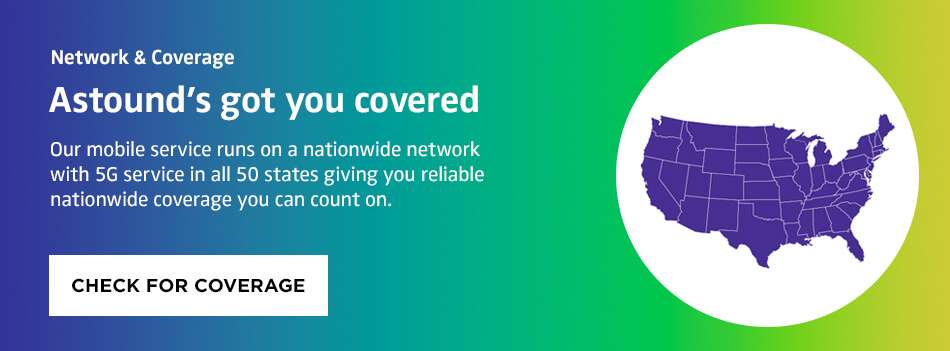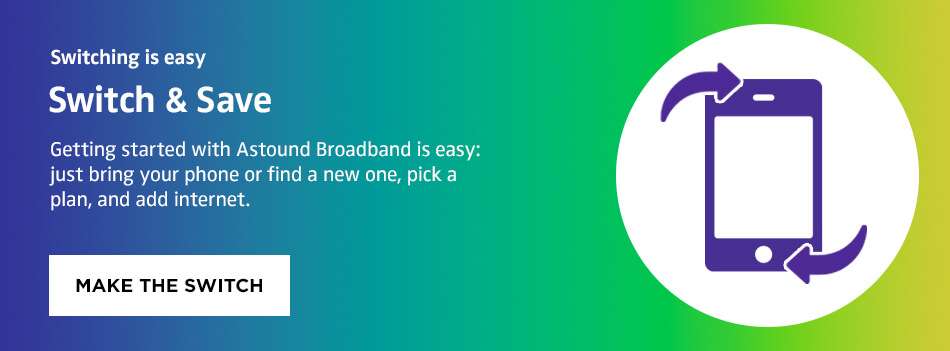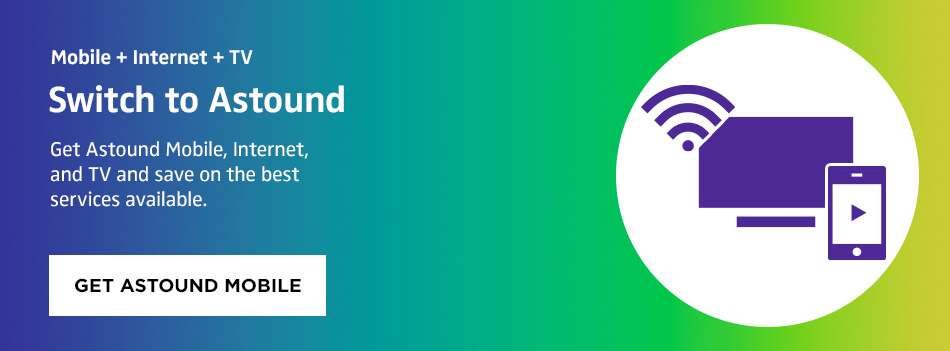CDMA vs. GSM: What's the Difference?

CDMA and GSM are the two most widely used mobile networking standards for mobile communication. Even though both systems are intended to accomplish the same goal of connecting people over the phone, they take very different approaches.
In this article, you will learn the differences between the two technologies, the advantages and disadvantages of each, and their relevance to the mobile communication experience.
What you'll learn:
- What is Global System for Mobile Communication (GSM)?
- GSM advantages and disadvantages
- What is Code Division Multiple Access (CDMA)?
- CDMA advantages and disadvantages
- Differences between CDMA and GSM
- How to check if your phone uses CDMA or GSM
- The future of CDMA vs. GSM
- GSM application in IoT
- Looking for info on more topics?
What is Global System for Mobile Communication (GSM)?
GSM (Global System for Mobile Communication) is a digital cellular communication standard created by the European Telecommunications Standards Institute for 2G and 3G digital mobile networks.
It’s widely available, with coverage in over 219 countries.
It transmits mobile voice and data services over a wireless network.
GSM networks employ a variety of frequency bands, including 900 MHz and 1800 MHz in Europe, Asia, and Africa, as well as 850 MHz and 1900 MHz in the Americas.
GSM employs a variant of TDMA (Time Division Multiple Access) to allocate the same frequency to many users by dividing the frequency bandwidths into different time slots.
It also uses FDMA (Frequency Division Multiple Access), which divides frequency bands into multiple bands, each assigned to a specific user.
While transmitting signals, voice and data are given a channel and a time slot.
Advantages of GSM
- GSM technology has extensive coverage as it’s widespread throughout the globe. According to gsma.com, GSM has a standardized spectrum, which means that even if various countries utilize different frequency bands, users can seamlessly switch between networks while keeping the same phone number.
- Due to GSM’s extensive coverage, there’s a larger variety of GSM-enabled phones. As a result, customers have more freedom to select a device that meets their needs.
- GSM supports international roaming because the network used is the same worldwide. International roaming makes it easier for travelers to maintain contact while they are on the move.

- GSM uses SIM cards to store customer information. Users can easily switch phones or networks by placing a SIM card in another device or putting a new one in their phones.
- Newer versions of GSM can integrate with other wireless technology-based gadgets like CDMA and LTE.
Disadvantages of GSM
- GSM experiences bandwidth lag as multiple users join and share the same bandwidth. This results in significant latency on the network.
- GSM uses pulse-transmission technology that can cause electronic interference with some devices such as pacemakers and hearing aids.
- GSM data transfer rates are limited. To achieve higher data speeds, users must upgrade to a device that supports more modern networks, such as 4G or 5G.

What is Code Division Multiple Access (CDMA)?
Similar to GSM, CDMA (Code Division Multiple Access) is a digital network protocol used in 2G and 3G wireless mobile communications.
CDMA is a form of multiplexing that permits several signals to occupy a single transmission channel, maximizing the utilization of available network bandwidth.
CDMA is based on spread spectrum technology.
CDMA networks stack digitalized calls on top of one another, assigning unique codes to distinguish them.
Every piece of encoded call data is then transmitted at the same time.
Also, each receiver has a unique key that allows it to separate the combined signal into individual calls.
In CDMA, multiple users on a single channel are identified by the code they use to send the signal.
Advantages of CDMA
- CDMA has an increased capacity because it allows multiple users to utilize the same frequency band.
- CDMA offers more security as the unique code assigned to a user while transmitting data is encrypted, making it difficult to interfere with and decode the signal.
- CDMA provides better signal quality for voice calls because it experiences less interference and noise. Each user is assigned a specific code that filters the desired signal from the interference signals.

- CDMA is more energy efficient as it uses dynamic power control systems to reduce interference. CDMA dynamically adjusts energy to provide robust connectivity without draining the battery of mobile phones.
- CDMA employs an efficient use of bandwidth through multiplexing, which results in faster data transfer rates and reduced network congestion.
Disadvantages of CDMA
- CDMA does not support international roaming.
- CDMA does not use SIM cards as the phone is linked to a network. The lack of SIM card compatibility hinders the ease and flexibility of upgrading to a new phone or switching between carriers, unlike in GSM, where users can insert SIM cards into different devices.
- There are a limited variety of phones to choose from for CDMA networks since most mobile companies use GSM worldwide coverage.
Differences between CDMA and GSM
Although both GSM and CDMA technologies are communication protocols used in telecommunications and by mobile carriers, they differ in how they function.
Neither network is inherently better than the other.
The quality of the service depends on the network carrier providing it, so you should choose a network based on your individual needs.
The following are more distinctions between GSM and CDMA technologies:
1. Coverage and availability
GSM has a broader base and is utilized in over 200 countries.
In contrast, CDMA is predominantly used in the United States, Canada, and Asian countries like Japan and South Korea.
GSM offers international roaming features because it is expansive, while CDMA only offers nationwide roaming.
2. SIM usage
GSM enables users to use a SIM card to switch carriers and use it anywhere if they have an unlocked phone.
In contrast, CDMA phones do not require SIM cards because they are linked to a network.
Instead, they utilize a unique identification number to identify their users.
When a user wants to upgrade to a new phone, they must ask their carrier to assign the old serial number to the new phone.
3. Variety of phones
Most mobile technology firms make their phones GSM-compliant and provide users with a large selection of options, while CDMA phones are limited in availability.
GSM’s variety makes switching mobile devices more convenient for GSM users, who can easily switch mobile devices by inserting their old SIM cards into a new phone while retaining their data.
4. Security
CDMA is highly secure since it includes built-in encryption capabilities.
A user is assigned a unique code that encodes all their communications, making it difficult for outsiders to trace the signal and intercept the calls.
In GSM, temporary identification numbers are assigned to a user to protect their phone number.

To ensure the security of the conversations, frequency hopping and encryption protocols are used.
5. Usage of data/voice call
In CDMA, voice and data are transmitted simultaneously on the same radio channel through Time Division Duplexing (TDD), separated in time.
When a user dials a phone number, the phone switches to the voice channel, and when there is data usage on your phone, the phone switches to the data channel.
As a result, the user will often receive internet notifications after they finish a call.
GSM allows voice calls and data usage to occur simultaneously, even without WiFi.
6. Affordability
CDMA phone calls are cheaper compared to calls made on a GSM network.
Despite having lower call rates, CDMA is primarily restricted to a small number of countries.
As a result, GSM has more options for growth and establishing cell sites across borders.
Unlocked GSM phones are typically less expensive than locked, under-contract CDMA phones because there’s a larger variety of GSM phones available to choose from.
7. Data speed rate
With EDGE data transfer technology, GSM has a data speed rate of 384 kbps.
However, with High-Speed Packet Access (HSPA) and HSPA+ in 3G GSM, data speeds can reach up to 42 Mbps.
On the other hand, CDMA offers data transmission rates of 2 Mbps through Evolution-Data Optimized (EVDO) technology.

8. Technology used
CDMA networks are built on spread-spectrum technology, which makes the best of available bandwidth by allowing each user to broadcast continuously across the whole frequency spectrum.
GSM operates on the wedge spectrum, called a carrier.
This carrier is separated into several time slots; each user is assigned a different time slot.
No other subscriber can use this until the current call is completed.
GSM separates users and cells by using both TDMA and FDMA technologies.
How to check if your phone uses CDMA or GSM
You can use your phone’s settings to determine whether it is GSM or CDMA.
Follow the steps below to confirm:
On an iPhone:
- Go to the Settings app.
- Click on General and then About.
- Look for an IMEI, MEID, or ESN number in the menu.

On an Android phone:
- Go to the Settings app.
- Click on System, then choose About phone.
- Click on Status and look for an IMEI, MEID, or ESN number.
If your phone has an IMEI number, it’s GSM. If you see a MEID or ESN number, it’s CDMA.
Your phone supports both technologies if you see an IMEI and a MEID or ESN number.

The future of CDMA vs. GSM
With support for 2G and 3G networks, CDMA and GSM technologies have long been used extensively for voice and data communication.
However, introducing new network infrastructure, such as 5G networks, has significantly diminished the relevance of CDMA and GSM.
Many major mobile carriers have been shutting down their 3G and 2G networks in favor of 4G and 5G networks.
The shift is because 4G and 5G networks outperform 2G and 3G networks in terms of data speeds, network capacity, and low latency levels.

In addition, 4G and 5G networks transmit data faster and with greater bandwidth efficiency than 2G and 3G networks using the same radio frequencies.
GSM application in IoT
While GSM technology has recently seemed outdated in mobile networks, it is still extensively employed in Internet of Things (IoT) applications.
IoT is the network of devices embedded with sensors, processors, and other technologies that enable them to connect to other devices and communicate over the internet.
GSM IoT is an energy-efficient low-power wide area network (LPWAN) technology that aims to enable long-range, simple cellular connectivity for IoT devices.
The majority of IoT devices that rely on GSM networks are battery-powered.
These devices include smart meters, asset trackers, and embedded sensors.
The GSM network is used by most Internet of Things (IoT) devices due to its extensive global reach and long-range connection, which allows for communication with various devices across large geographic distances.
GSM operates on LPWAN, which has lower bandwidth requirements, translating to less energy consumption.
As a result, these IoT devices can last longer and are cost-effective.
Get Mobile + Internet Together
Find the mobile service, home internet and streaming that’s just right for you.
Astound Mobile requires Astound Internet service. Coverage not available in all areas. A trademark of Ziff Davis, LLC. Used under license. Reprinted with permission. Where available. © 2024 Ziff Davis, LLC. All Rights Reserved. All names, logos, images and service marks are property of their respective owners. ©2025 Radiate Hold Co., LLC d/b/a Astound Broadband. All rights reserved.
This website contains instructional information, including from third-party sources, and is intended, but cannot be guaranteed, to be always up-to-date, complete and accurate. Astound does not endorse, and is not responsible for, any third-party content that may be accessed through this website. Any representation or warranty by Astound that might be otherwise implied by information on this website is expressly disclaimed. Astound expressly disclaims all liability or responsibility with respect to actions taken or not taken based on any or all of the instructional information contained on this website. Astound does not warrant or guarantee the availability of any services at any specific time or geographic location or that services will be provided without interruption. Not all aspects of the Astound services function on all equipment and devices. Use of this website is subject to the Web Site Disclaimer and Web Content Accessibility Policy.




















